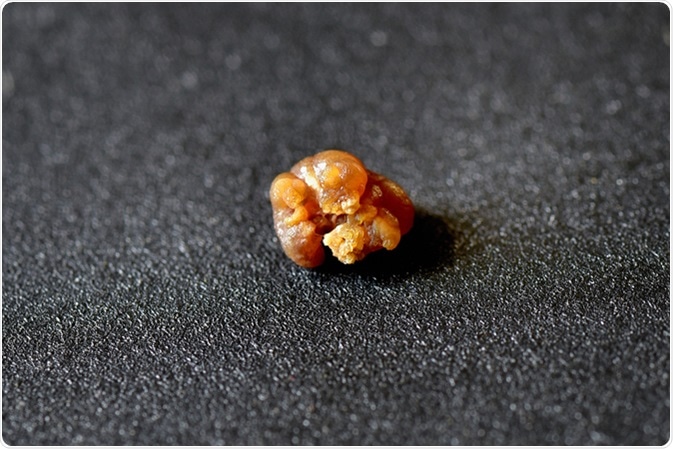By Jeyashree Sundaram (MBA)
The incidence of kidney stone formation in pediatric patients is increasing at a rate of about 5–10% every year. Kidney stones are linked with higher risk of heart disease, hypertension, chronic kidney disease, and reduced amount of minerals in the bones. Many young patients being diagnosed with kidney stones is a matter of great concern.
Developments in the field of endourology have paved the way for surgery with minimally invasive techniques. Nephrolithiasis or kidney stone—a mineral metabolism disorder—develops during the early life of a child and the frequency is expected to increase over the lifetime. The formation of kidney stones is connected with serious medical conditions and is of utmost importance for physicians while assessing and treating the patients.

Studies on Stone Formation
Kidney stones are mostly made up of minerals. All the minerals are in crystal form and the crystal faces are well defined. The morphologies of struvite, cystine, brushite, and calcium oxalate dehydrate crystals are similar to those of crystals developed in solutions whereas this is not true in the case of stones composed of calcium oxalate hydroxyapatite and monohydrate.
The results of a study attempting to find out whether there is a constant decline in the function of the kidney after the occurrence of first kidney stone have proved positives in developing chronic kidney disease.
In a study that analyzed the urine samples of children with hypercalciuria (HC) and without HC, it was found that there was an increase in phosphaturia, magnesuria, uricosuria, citraturia and natriuresis among HC children with no lithiasis.
Research has proved that stone growth is dependent on the urine that is supersaturated in the pelvic region.
Studies has also been done to distinguish between uric acid and non-uric acid kidney stones. The results have shown that uric acid and non-uric acid stones displayed unique shapes.
A research on the quality of life of patients with kidney stones was conducted. Most of the patients reported a lower quality of life; general health was considerably poor in kidney stone patients.
Studies on Treatment Procedure
The answer to the question ‘how small stones are retained in the kidneys’ is not yet understood completely. Studies have proposed that understanding the stone retention mechanism in the early stages of stone formation may help to provide better treatment for kidney stones.
The incidence of pediatric urolithiasis has been increasing by 6–10% every year in the past few decades. The focus of the research has been to find out ways to increase life expectancy among children, decrease possibilities of relapse, and use ionizing radiation for diagnosis, treatment, and follow-up of the disease.
It was found that minimally invasive percutaneous nephrolithotomy treatment for removing kidney stones has many advantages when compared with conventional percutaneous nephrolithotomy.
The developments in endourologic technology have been found to be beneficial for patients with bilateral stone as it can cater to bilateral synchronous percutaneous nephrolithotomy (BS-PCNL). The treatment can provide a higher stone-free rate.
Studies have been carried out to find out the kidney stone treatment options for patients whose kidneys are anatomically abnormal. Patients with isolated rotation anomalies, horseshoe kidneys, and pelvic ectopic kidneys were included in the study and evaluated for mean operation time and hospitalization time, complication rate, and stone-free rate. The results have found that retrograde intrarenal surgery is safe and satisfactory for treating small and mid-sized stones in patients with abnormal kidneys.
Treatment Comparison
In a study involving comparison of ureteroscopic lithotripsy (URSL) and retrograde intra-renal surgery (RIRS) treatments among children for urolithiasis, it was found that both these treatments are safe and highly efficient. The study also highlighted that the use of holmium laser reduces the procedure duration and increases the effectiveness of the procedure compared to the use of pneumatic lithotripter.
To determine the complications associated with percutaneous nephrolithotomy, which are infectious in nature, and to develop a tool that could predict postoperative complications depending on the risk factors, a study was carried out. The results revealed that patients with preoperative infection in their urinary tract and for whom the stone size was large, there was a high risk of developing systemic inflammatory response syndrome.
In a study aimed at finding out the treatment mode for kidney stones of size 5 mm or less which do not show symptoms, it was found that when patients undergo a medical expulsive treatment for 12 weeks, there is significant improvement in stone-free rates.
Super-mini percutaneous nephrolithotomy was found to be a very effective, feasible, and safe treatment for kidney stones.
In one study that attempted to determine the factors for success in treatment, it was found that the shockwave frequency used in the procedure, such as shockwave lithotripsy (SWL), was an important factor for successful treatment of kidney stones. The results show that there was a significant increase in pain perception at 30 shocks per minute in comparison with that at 60 shocks per minute.
Sources
- https://medlineplus.gov/kidneystones.html#cat_59
- https://www.ncbi.nlm.nih.gov/pubmed/28417430
- https://www.ncbi.nlm.nih.gov/pubmed/28422036
- https://www.ncbi.nlm.nih.gov/pubmed/28544299
- https://www.ncbi.nlm.nih.gov/pubmed/28359409
- https://www.ncbi.nlm.nih.gov/pubmed/28326800
- https://www.ncbi.nlm.nih.gov/pubmed/28233230
- https://www.ncbi.nlm.nih.gov/pubmed/28221139
- https://www.ncbi.nlm.nih.gov/pubmed/28299318
- https://www.ncbi.nlm.nih.gov/pubmed/28258740
- https://www.ncbi.nlm.nih.gov/pubmed/27928809
- https://www.ncbi.nlm.nih.gov/pubmed/27819138
- https://www.ncbi.nlm.nih.gov/pubmed/27670851
- https://www.ncbi.nlm.nih.gov/pubmed/27913855
- https://www.ncbi.nlm.nih.gov/pubmed/27900406
- https://www.ncbi.nlm.nih.gov/pubmed/27776839
- https://www.ncbi.nlm.nih.gov/pubmed/27771854
Further Reading
- All Kidney Stone Content
- Diet and Nutrition for Kidney Stones
- Kidney Stones: Symptoms and Causes
- Kidney Stones – Nephrolithiasis
- Kidney Stones – Treatment
Last Updated: Feb 26, 2019
Source: Read Full Article
